Celebrate Asia: Inside a village of mask makers and dancers in Indonesia
Advertising
CNA Lifestyle
Celebrate Asia: Inside a village of mask makers and dancers in Indonesia
In the kickoff of a serial of stories looking at unique people, places and food in Asia, CNA Lifestyle visited a village off the Indonesian city of Cirebon, where the art of tari topeng – or mask dance – is alive and well.
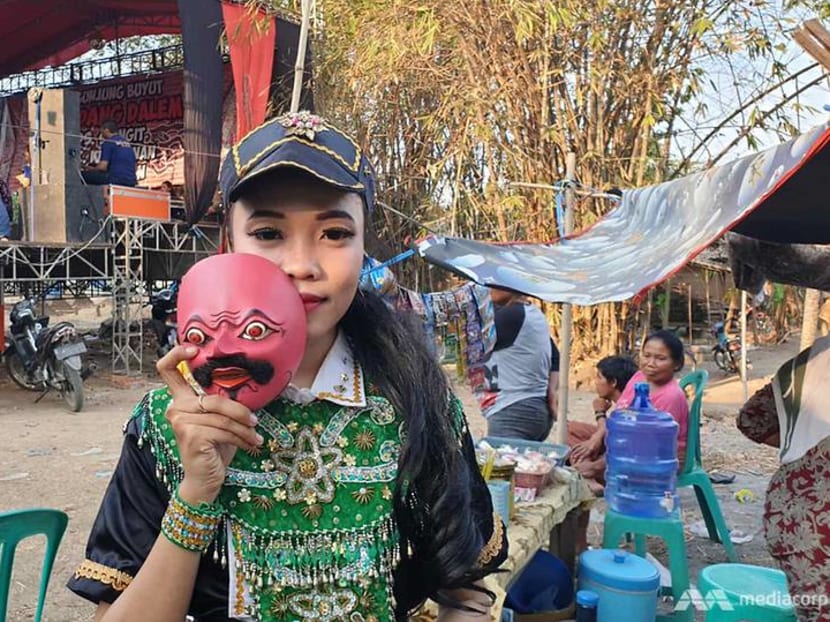
Tari topeng dancer Singling Habibah from the hamlet of Slangit in Cirebon, Due west Java, Indonesia. (Photo: Mayo Martin)
On this sleepy Saturday afternoon, Slangit looked similar a typical rural village in Indonesia – rice fields on either side of a dusty, narrow and bumpy road, chickens wandering about, and people lazily chilling exterior modest, unpainted physical bungalows.
Nothing seemed out of the ordinary. Until a young girl casually walked past wearing a pink wooden mask with a very dapper moustache.
"It's nearby," said my guide, Sutandi.

We had driven three hours from Bandung to the port urban center of Cirebon in West Java, and another 45 minutes to reach this place, where apparently no one bats an eyelid when girls wearing masks accept a leisurely afternoon stroll effectually the kampung.
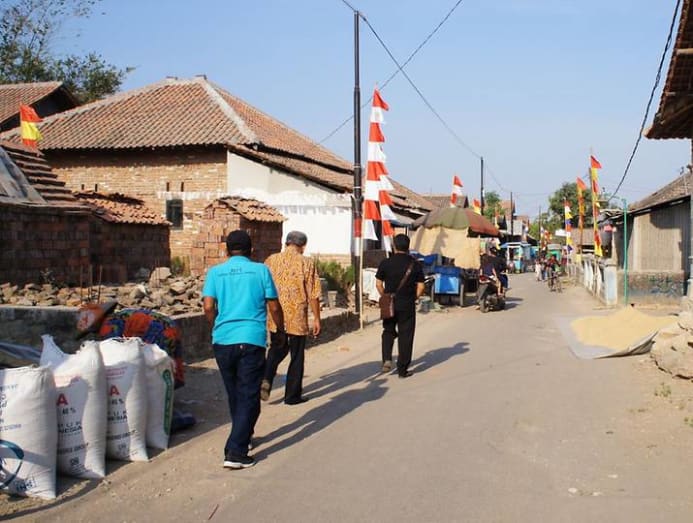
And we presently institute out why. Walking past a small-scale cemetery and a mini-trampoline cage full of squealing, bouncing kids (a lesson in juxtaposition there), nosotros followed the sounds of gamelan music until we turned a corner to see an open air performance of Slangit's pride and joy: The tari topeng.
READ: Celebrate Asia: For Palawan'due south islanders, a beautiful simply tough life in paradise
AN Accurate ENCOUNTER
The tari topeng – which literally means "masked trip the light fantastic toe" – is a type of operation found all over Indonesia, from Kalimantan to Madura to Cirebon, where I was.
The versions institute in Yogyakarta and Bali are probably what many visitors to the country are near familiar with – the full-on exotic-looking costumes and masks worn by dancers depicting tales from the Ramayana, Mahabharata and Java's ain Panji stories.
But information technology's one matter to see it at a ticketed cultural bear witness for tourists and another to stumble upon an actual operation in a hamlet for villagers.
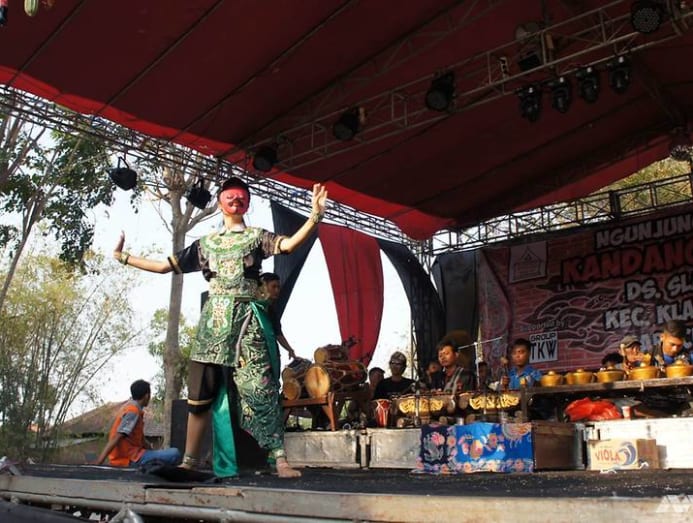
"We're very lucky," said one of my companions, Waryo, who teaches tari topeng equally an academic discipline and sometimes makes masks himself. These village performances, he said, happen mayhap one time a year during very special occasions relating to harvest flavour and are usually done in respect of village ancestors (neither of which explain the trampoline, really).
Such performances tend to get on throughout the mean solar day – with tari topeng holding courtroom when the sun is out, before wayang kulit or wayang golek (shadow puppetry) performers step in for the night shift.
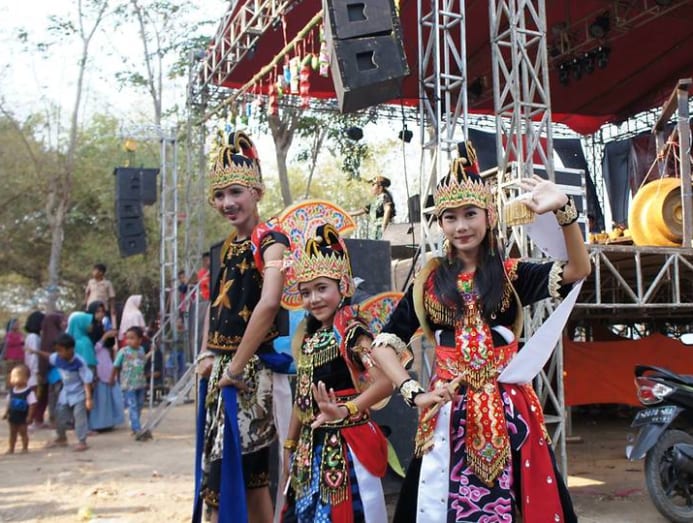
It's no wonder, and then, that the place was jam-packed with women and kids (the men were withal out working, we were told), whose eyes were glued to the makeshift phase beside a bamboo grove.
As the gamelan performers gonged abroad – and a adult female to the side fabricated sound-effects noises with her mic – a young adult female stepped onstage to perform.
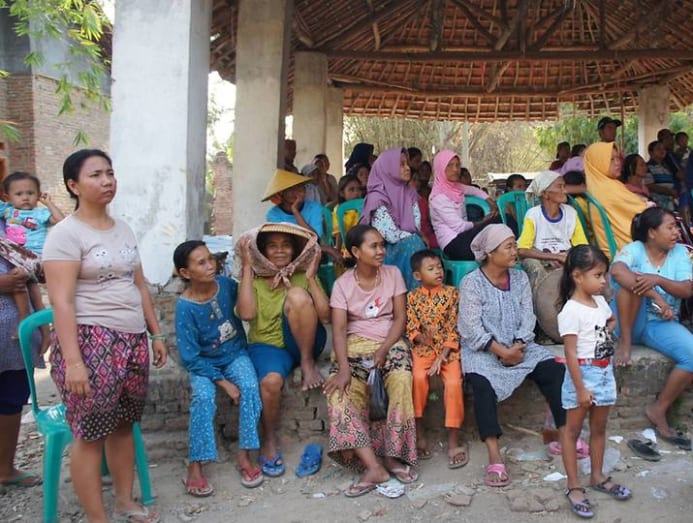
For the first few minutes, she danced without a mask, before ceremoniously unfolding a pocket-size blackness packet I hadn't noticed. She briefly turned back to the audience and – voila – she was wearing a teeny-tiny scarlet mask.
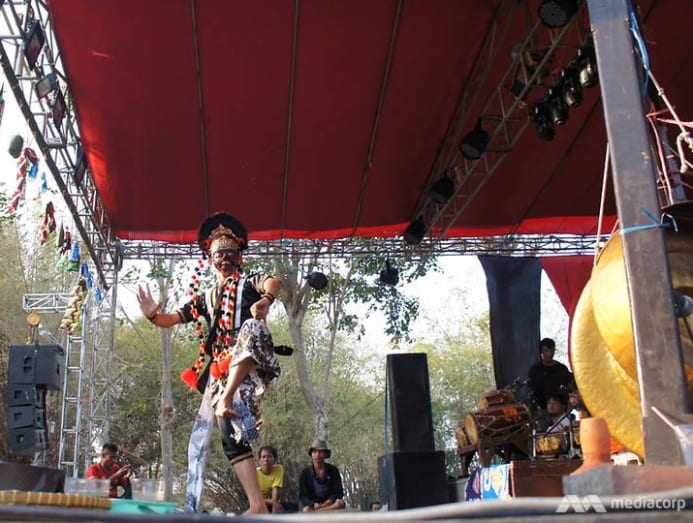
Unlike MASKS FOR DIFFERENT FOLKS
Figuring out the differences betwixt versions of tari topeng effectually Indonesia would probably take more than than a day, merely my companions were more than game to give a crash class.
Cirebon's version, they explained, was unique in a few ways. While the masked dancers down in Bali, for example, have a stronger Hindu-Buddhist influence, more than Islamic elements have found their fashion to the versions in Cirebon, where the get-go sultanate in Western Java was established in the 15th century, which was effectually the same time its tari topeng came virtually, back in 1485.
And we're not kidding when nosotros say versions. In Cirebon, different villages accept their ain unique styles of Cirebon Tari Topeng, according to Waryo.
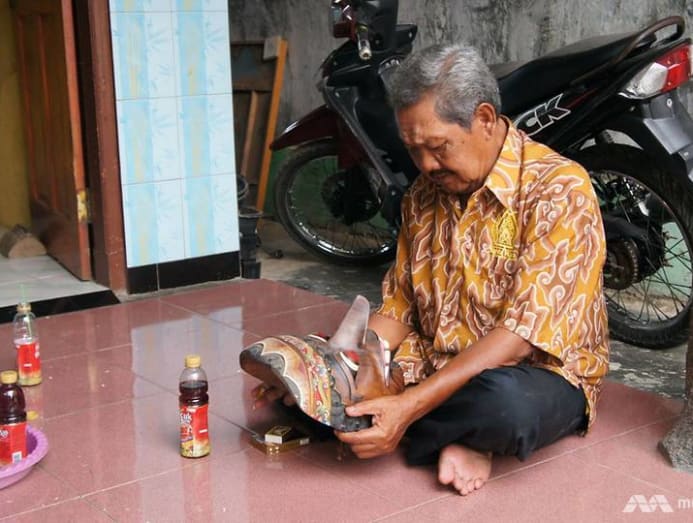
In fact, one of my other companions that solar day, Haji Mansour, grew upward in nearby Gigesik surrounded by dancers. Now 69 years erstwhile and a master dalang – or puppeteer – Pak Mansour recalled how his female parent would go from hamlet to hamlet every bit a tari topeng dancer.
Just how hard is it to exist tari topeng dancer? He recalled with a express joy that he opted to handle puppets because he wasn't good enough to dance. "It takes at least five years," he said.
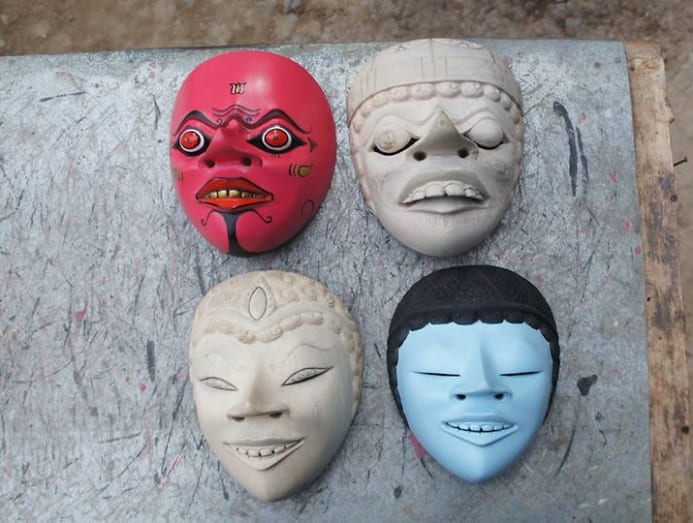
Another element that makes Cirebon's mask dance unique is in the mask itself. According to Waryo, they're smaller compared to the masks in, say, Yogyakarta. And while other masks are usually secured around the head with rubber or strings, performers hither bite on a leather strap nailed to the inside.
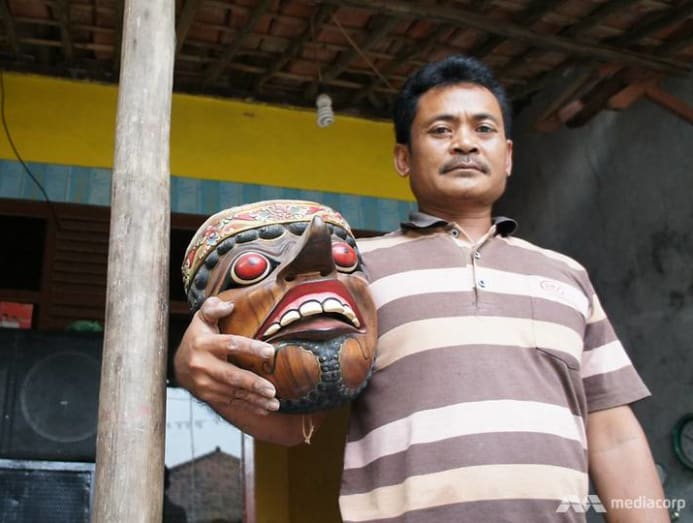
And performers in Slangit don't have to get far to buy theirs. A curt drive from where the tari topeng operation was brought united states of america to Pak Murani'south house. The 44-year-erstwhile is i of Slangit's two resident mask-makers, and patently the better one.
Since 2003, the former piece of furniture and door-maker has been making masks exclusively. "It'due south simple and not hard to do – and I tin take my ain sugariness time," he joked.
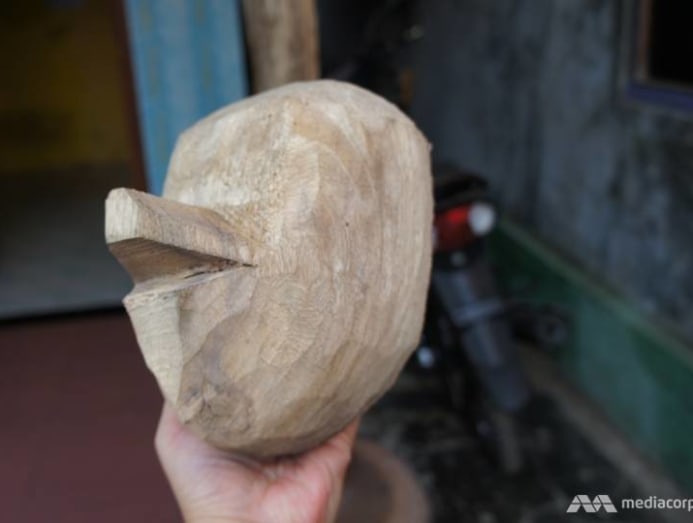
But that doesn't mean it's non hard piece of work. Each mask takes well-nigh five days to a week to brand, from etching the woods (there's a pile of timber outside his business firm) to painting the faces on.
Each mask sells for between IDR400,000 (S$39) to IDR700,000 and, at the moment, he's busy with orders from Bandung and Solo. When we dropped past, a handful of masks were drying in the dominicus outside. Business has been good, he said.
A HOBBY TO PROTECT THEIR Civilization
Going past Pak Murani'south mask-making business and the lively operation we stumbled upon in Slangit, it seems tari topeng in Cirebon continues to have a future.
It is occasionally in the spotlight, being shown on local and national tv set, and there are regular performances at tourist attractions in Cirebon and Bandung. Troupes take also performed in the United States.
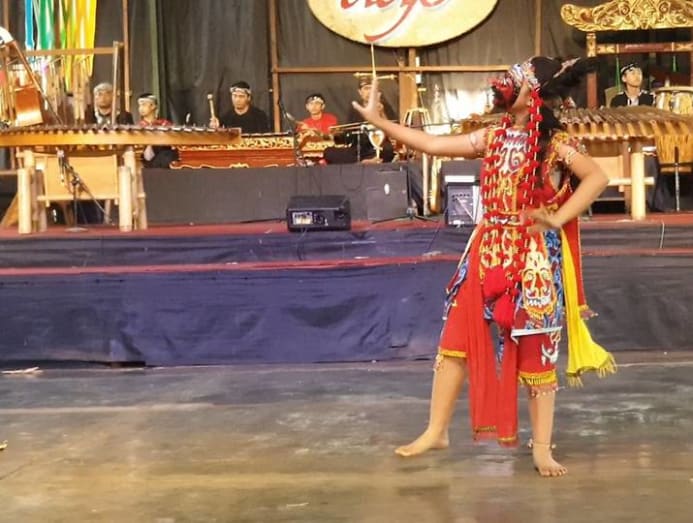
Simply while it'due south thriving, Waryo said, it however needs support from the authorities to keep things going. And there have been changes to how it's being performed, too. Pak Mansour said that back in the day, it was likewise mutual to see a tari topeng version that had around 15 to 20 people performing simultaneously. Today, most performances are done by just one person.
And that line of kids throwing money at the stage during the bear witness? My guide Sutandi pointed out that most of the performers don't make much doing the tari topeng, which is why these modest gestures of generosity from their boyfriend villagers are very much welcome.
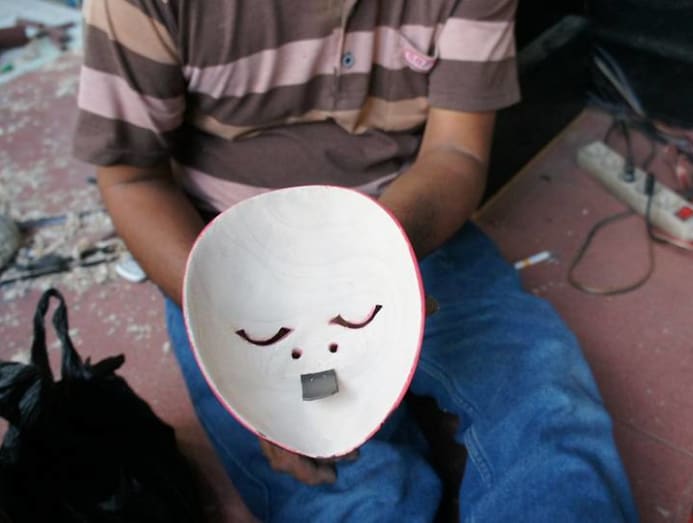
But the dancers persevere. "Information technology'southward a hobby simply it'southward also a way to protect my culture," said Singling Habibah, who was the first dancer nosotros saw performing. The 22-year-former loftier schoolhouse graduate has been at it for a few years now and said she'll continue to do it.
"I can do all the different types," she smiled, before showing me her blood-red mask and flipping it. Written at the back of her mask was her proper noun. She'due south in information technology for the long haul.
To discover out more about Celebrate Asia, visit cna.asia/celebrate-asia.
Source: https://cnalifestyle.channelnewsasia.com/travel/mask-dancer-village-cirebon-indonesia-celebrate-asia-256716

0 Response to "Celebrate Asia: Inside a village of mask makers and dancers in Indonesia"
Enregistrer un commentaire